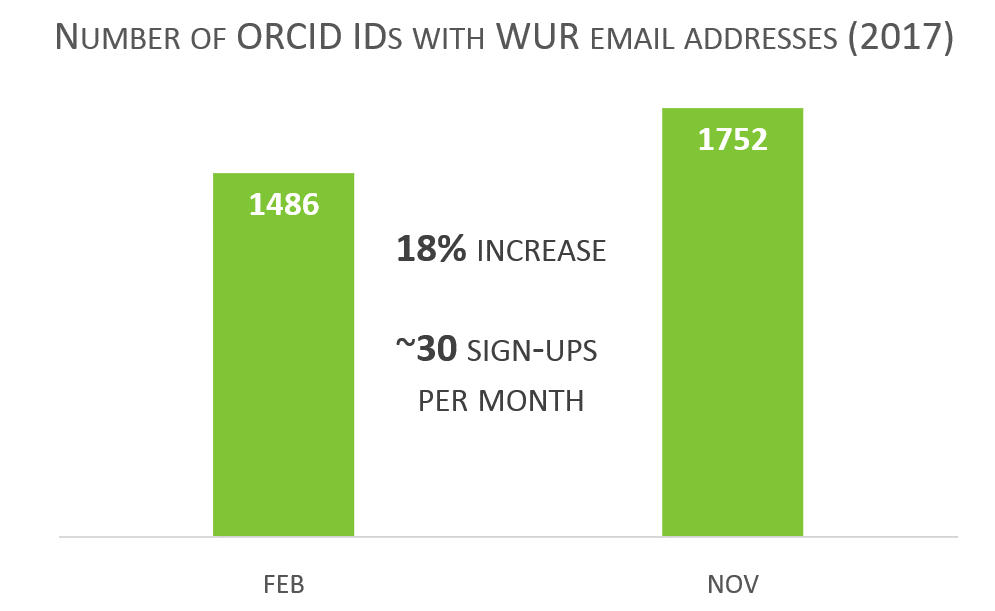ORCID: all of your research output in one place
Perhaps you have heard of ORCID: the unique, persistent identifier for researchers. ORCID distinguishes itself from other initiatives such as Academia and ResearchGate in how it identifies researchers; and this brings with it many advantages. This blog post introduces ORCID and explains how you can use it to its fullest – which includes linking it to other profiles you may have (such as your output in Staff Publications).
What makes ORCID different from other researcher profiles?
All profiles have their own advantages: ResearchGate, Mendeley and Academia.edu are good for networking and for seeing how your work is received by others. The Scopus Author ID and Web of Science’s Researcher ID allow you to calculate your h-index and other metrics. ORCID’s main purpose is to identify who you are and which works belong to you – be it scientific articles, presentations, posters or other output. The identification does not rely on your name, but on a 16-character code that ORCID assigns to you when you create a profile. This code (or ‘ORCID iD’) is unique to you, and is persistent – it stays the same even if you change name or organisation. You can fill your ORCID profile with your personal details and works, and can control who sees what information. ORCID is increasingly seen as the primary researcher identifier, and is integrated in the workflows of institutions, funders and publishers. The last might, for example, ask you to fill in your ORCID iD when submitting a manuscript so that the published article can show your iD together with your name – making you and your work more findable.
Advantages of having an ORCID iD
The above already mentions some advantages, but here is a list:
- as the ORCID iD is unique, name confusion will no longer be a problem
- as the ORCID iD is persistent, you can use it throughout your entire career
- ORCID is increasingly used by individuals (e.g. as a signature below emails) and systems (e.g. in Scopus), enabling recognition and discoverability
- ORCID is a non-profit organisation and has promised to stay free forever
- ORCID gives you control over your information – you decide who gets to see what
- ORCID is time-saving because you can have your profile filled/updated automatically from other profiles (more on this below)
ORCID at WUR
Thanks to these advantages, ORCID is steadily growing. The total number of ORCID iDs has grown to over 4.1 million since its launch in 2012. At WUR, too, we see a growth in ORCID iDs registered with WUR email addresses; 2017 showed an 18% increase from February to November, to a final count of almost 1800 profiles (see figure). The actual numbers are likely higher than this, as many of us might register with another email address than our WUR one.

The question is, however, how actively these ORCID profiles are being used. Opening a random batch of WUR ORCID profiles, we discover that many are empty. This might be due to the mandates from publishers, requiring researchers to create an ORCID profile in their submission process, without any incentive to maintain it afterwards. For the same reason, duplicate profiles might exist. This also became clear at the ORCID stand at the Publish for Impact symposium organised by WUR Library and WGS last year. Many researchers visited the stand to create an ORCID iD; but after checking the registry, it appeared that some already had one. So while the idea of ORCID seems to appeal, existing profiles are not always used (or remembered!). So how can we get more out of our ORCID iD?
Getting the most out of ORCID – link it!
One of the practical advantages of ORCID is that you can link it to other profiles, transferring works from one to the other. By linking your ORCID to Scopus, for example, newly published articles will be pushed to your ORCID automatically (Note: this ‘auto-update’ function does not work for all systems). To establish links, open your ORCID profile, go to ‘Add works’ and then choose ‘Search & link’. Setting up links is quick, and once done, it will help you keep your ORCID profile up to date. Your works will then always be listed in one place rather than scattered across profiles. And they will be easily findable, as systems such as Scopus also allow the searching of publications by ORCID iD.
Pushing your WUR-output to your ORCID
You can now also link your ORCID to Pure, the system behind Staff Publications, so that your WUR-output is transferred to your ORCID. This will ensure that even the WUR-contributions that are not pushed from databases such as Scopus (e.g. presentations) are added to your ORCID profile. This page provides a document explaining how to set up this link.
Questions?
Don’t hesitate to contact the library if you have any questions. You are also welcome to visit our ORCID pop-up library stand, where Library staff will help you create and/or link your ORCID, or answer any other questions you may have. The pop-up libraries are on January 30th in Gaia and on February 1st in Helix, both from 11:30 to 13:30.

